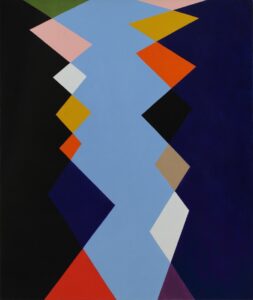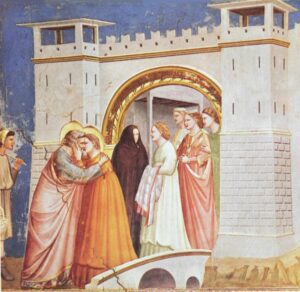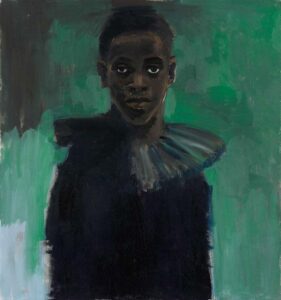Stephen Westfall

I’m aging out of teaching art in college and can’t help but wonder what it all means. At 70, I’ve been teaching for 50 years and I’m eager to spend whatever time I have left fully practicing what I “profess.” It’s not that I haven’t been able to make my own artwork while teaching, or that the colleges and universities where I’ve taught haven’t given me time to paint through sabbaticals and grants, not to mention salary. And I’m besotted with my students, perhaps more fiercely than I have ever been. The classes I’ve taught over the last few years have been my favorite pedagogical experiences of my life, partly because I feel looser, less constrained by syllabi that might have become a straight-jacket in previous years through righteous adherence in the face of shifting class demographics and broader and more immediate social crises.
The pandemic may have something to do with this increased flexibility: the very act of teaching art had to be reimagined as we all (or most of us) took the classroom online. This improvised migration to a radically different contact space was followed almost immediately (on May 25th, 2020, the end of the first pandemic semester) by the murder of George Floyd and the almost universally recognized need within academic art departments for a sober and far-reaching institutional response involving a recasting of an art curriculum which too often presented an bleached out art history excluding people of color and pre- and post-colonial cultures, not to mention the high-level participation of artists of color and women in the creation of the already sanctioned Modernist canon. Questions of broadening the canon and teaching towards inclusivity have of course been hammering at the door before the crises of the spring and summer of 2020, but crisis forced the issue, as it often does. At the Mason Gross School of the Arts at Rutgers University and the MFA program at Bard College, two programs that I’ve long been associated with, this push for diversity, equity and inclusion has been underway for some time. And, ironically, it is the constraint of time itself on a four year (BFA) or 2-3 year (MFA) education that is the site of conflict over this curricular enrichment. How do we cram the whole incomplete story in?

For Modernism was a process of liberation, primarily from theocracy, that provided models for what was to come. The process was fraught, filled with triumph and doubt, and because it’s art, the doubt is also triumphantly representative of the human condition. So, we begin again with Giotto’s blue sky and human tenderness and try to show how the universally and ordinarily human is emerging from the unblinking, frozen gold eternities of icon painting. It is a slow rolling Big Bang compared to what had come before. No matter how much how much Tony Kushner’s Angel of History protests, we begin to weave a fresh tapestry in time which unrolls and widens into our expanding present. The admissibility of atheism, science, women, people of color, and LGBTQI folk has been fought tooth and nail by holders of revanchist notions of the sacred both within and without academe. The oppressive notion of the sacred is one that is aghast at the proliferation of complexity in modern life and can’t imagine the sacred can survive. A contemporary “woke” (or waking, lol) artist or other form of intellectual understands that any notion of the celebratory or sacred can’t flourish without it. I always come back to the astounding first two paragraphs of Susan Sontag’s The Aesthetics of Silence to describe this expanded notion of the spiritual, hence the sacred:

Every era has to reinvent the project of “spirituality” for itself. (Spirituality = plans, terminologies, ideas of deportment aimed at resolving the painful structural contradictions inherent in the human situation, at the completion of human consciousness, at transcendence.)
In the modern era, one of the most active metaphors for the spiritual project is “art.” The activities of the painter, the musician, the poet, the dancer, once they were grouped together under that generic name (a relatively recent move), have proved a particularly adaptable site on which to stage the formal dramas besetting consciousness, each individual work of art being a more or less astute paradigm for regulating or reconciling these contradictions. Of course, the site needs continual refurbishing. Whatever goal is set for art eventually proves restrictive, matched against the widest goals of consciousness. Art, itself a form of mystification, endures a succession of crises of demystification; older artistic goals are assailed and, ostensibly, replaced; outworn maps of consciousness are redrawn. But what supplies all these crises with their energy — an energy held in common, so to speak — is the very unification of numerous, quite disparate activities into a single genus. At the moment when “art” comes into being, the modern period of art begins. From then on, any of the activities therein subsumed becomes a profoundly problematic activity, all of whose procedures and, ultimately, whose very right to exist can be called into question.
Such a story presents art as participating in an intellectual history, part philosophy, part political-science ; all of which is what establishes art as a discipline that has an important place in a liberal arts university or college. At the same time, we much teach the craft, even as the tools and platforms expand (besides the rhetorical omission of the sculptor, Sontag’s own bundle forgoes the film maker, the conceptual artist, and the performance artist, all of whom must be included). How to fit it all into a sequence of college majors? My own experience is that we can’t. Maybe the best we can do is prepare students to be students for the rest of their lives. Art classes must present the craft as a link to the history and a means to the present the practice. The introduction of great writing into the classroom helps because it explodes the myth of inarticulability and sets a foundation for critical accountability. Zadie Smith’s essays on Lynette Yiadom-Boakye and Kara Walker are recent examples of exciting art stirring exciting language and a filling-in of histories. Within the classroom this accountability should be couched in kindness (something that often must be relearned in college after punishing experiences in the secondary school system) and permission to repeatedly fail, to test and discard models for expression even as fluency develops.
Then there’s academic bureaucracy, which makes a lot of things possible, but inflates itself at the expense of teachers and numbers. The growth both in salaries and bodies of administration at the expense of faculty over the last twenty years has been well-covered, but how much administration inflation has added to the rising cost of tuition is less well publicized. And I don’t think the endangerment of the humanities in our collegiate education has been discussed enough. West Virginia University plans to cut 169 faculty positions and over 30 majors in a cost-cutting move, including world languages and literature and graduate level math. No administrative cutbacks have been reported as of this writing. Archeology programs have virtually disappeared from major universities across the country. College is now not only staggeringly expensive, but the humanities are being winnowed out as enrollment dwindles in favor of more vocational programs and the corporate grant attractors of research and development sciences. The programs I’ve been involved with have never had an enrollment crisis even as it’s been predicted, but we don’t generate alumni or corporate donations, either. A Tier-1 research university might support the arts for the prestige their programs bring if they are elite, but they are less regarded as part of the university’s mission if the numbers shrink. Look for attrition in humanities to continue unless priorities shift back within administrative master plans. Art pedagogy could find itself relocated back to residing only in art schools, isolated from the liberal arts university, not because its own lack of vitality, but because the notion of a “liberal arts curriculum” itself gradually dwindles away.
At ground level, in the classroom and whatever studio space can be found, students face other pressures, perhaps primarily the seductively even sheen of images on their cell phones. The leveling effect of social media is an enormous obstacle to an undergraduate student’s ability to make judgements bases on the material presence of an artwork, and an enticement to a belief in art as a sure-fire career path. Of course, this is a Ponzi scheme. The truth is that the most interesting art sustains a long game, and the promise of near-term monetary success is an elusive and troublesome distraction from the process of deepening one’s practice. Some people can handle it and continue to develop even if it means discarding motifs that have brought them recognition, while a lot of others burn out in a cycle of repetition. Artists can also burn out from neglect, and so I’m not sure if there’s a template for right thinking and behavior except common sense. Do we counsel students towards treating their art as something a bit beyond their knowing, something that is just beyond the reach of their current solutions? I see it hanging out there, conversing with the culture of made art, beyond even the culture that first sponsored the idea, kind of like the Kabbalist’s vision of The Book in which everything that has ever been written is but a page. On whose table does The Book lay open?
So, I’m retiring from teaching to return full time to practice, to be a student after matriculation. I have no idea how much time is given to me, but I’m hoping for a couple of decades to reach beyond my grasp. I know that teaching itself has been an extended learning process which has brought me to thinking more deeply about painting than I might have through any other up means. My interactions with my treasured colleagues and students have opened me up to fresh thinking about art and especially painting. The sharing of names and enthusiasms is the essence of collegiality and I’m optimistic I can carry that out the door. That, and a tantalizing sense of possibility that comes from anticipating an extended stretch of time with one’s practice in the studio. I imagine that in some small but inevitable way my painting will evolve to look like . . . painting.
